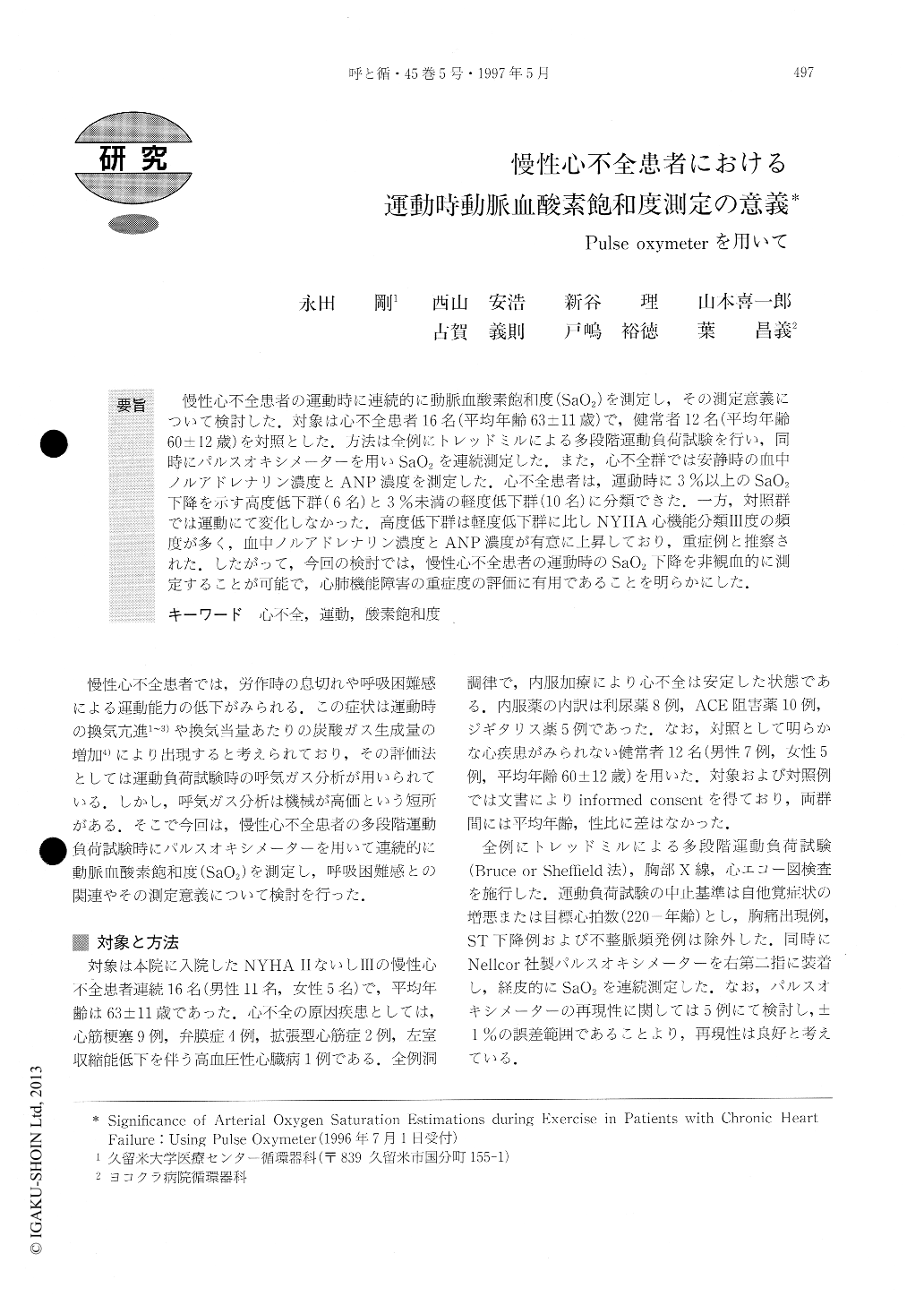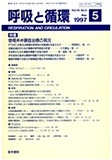Japanese
English
- 有料閲覧
- Abstract 文献概要
- 1ページ目 Look Inside
慢性心不全患者の運動時に連続的に動脈血酸素飽和度(SaO2)を測定し,その測定意義について検討した.対象は心不全患者16名(平均年齢63±11歳)で,健常者12名(平均年齢60±12歳)を対照とした.方法は全例にトレッドミルによる多段階運動負荷試験を行い,同時にパルスオキシメーターを用いSaO2を連続測定した.また,心不全群では安静時の血中ノルアドレナリン濃度とANP濃度を測定した.心不全患者は,運動時に3%以上のSaO2下降を示す高度低下群(6名)と3%未満の軽度低下群(10名)に分類できた.一方,対照群では運動にて変化しなかった.高度低下群は軽度低下群に比しNYHA心機能分類III度の頻度が多く,血中ノルアドレナリン濃度とANP濃度が有意に上昇しており,重症例と推察された.したがって,今回の検討では,慢性心不全患者の運動時のSaO2下降を非観血的に測定することが可能で,心肺機能障害の重症度の評価に有用であることを明らかにした.
Serial changes in arterial oxygen saturation during treadmill exercise was measured with a pulse oxymeter in 16 patients with chronic heart failure and in 12 con-trols. Control subjects showed no appreciable changes in oxygen saturation during exercise. In patients with heart failure, 6 showed a fall in oxygen saturation by 3% or more during exercise, while the remaining 10 patients did not show any exercise-induced fall in oxy-gen saturation. As compared with those showing no fall in oxygen saturation, patients with a fall in oxygen saturation were more frequently associated with short-ness of breath as end-point. Plasma level of ANP and norepinephrine at rest were significantly higher in patients with a fall in oxygen saturation.
These observations suggest that exercise-induced fall in arterial saturation could be detected by a pulse oxymeter in patients with chronic heart failure and is a useful index of the severity of heart failure.

Copyright © 1997, Igaku-Shoin Ltd. All rights reserved.


